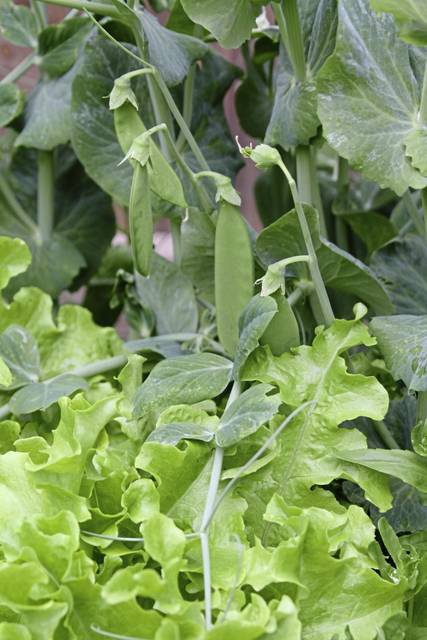7 succession planting tips for extending the season's harvest
Question: I’ve pulled out the spring crops I had in my garden, such as the peas, lettuce and spinach. I now have lots of room to grow some new things, but I’m not sure what to plant. There’s not enough time to add more tomatoes and peppers. What do you suggest I plant in these bare spaces in the garden?
Answer: Surprisingly, mid-summer is a great time to plant new crops in the vegetable garden. You’re correct in saying that it’s too late to plant more peppers and tomatoes, and it’s also too late to seed more vine crops, such as cucumbers and squash. But, it’s a great time to plant several different fast-maturing crops that will still germinate in summer’s heat.
Planting these crops extends the harvest for many weeks, and some can even continue to be picked even after fall’s first frost.
Called succession planting, these second and even third plantings within a single growing season are key to maximizing the garden’s productivity. Once spring crops have been pulled, it’s time to get planting again. However, it’s important that you amend the soil with an inch or two of compost to return nutrients that were depleted by the initial crop.
My favorite succession planting partnerships in my own garden:
• After harvesting my lettuce and pak choi, I sow carrots in their place. Root crops use different nutrients than lettuce and will still easily germinate and grow in summer’s heat.
• When the peas have finished and the vines have been pulled from the garden, I sow a few additional rows of beets. While my main beet crop goes in early in the spring, this second planting will be ready as soon as fall arrives.
• As soon as the radishes and kale have bolted (gone to flower), I pull them up and sow a few more rows of snap beans. This late sowing tends to be off the cycle of the Mexican bean beetle, thereby showing less pest damage and continuing to produce until very late in the season.
• I always plant Swiss chard after I dig my potatoes. While the potatoes aren’t ready to dig until after the plants fully die back, there’s still time to get in a late-season chard planting. It’s fast maturing and long producing.
• When the garlic is pulled, turnips go in their place. Not everyone likes turnips, so I don’t plant a lot of them, but they’re an excellent post-garlic crop.
• After pulling my spring-planted cole crops, such as kohlrabi and broccoli, I plant a whole host of heat-tolerant greens. I love colorful orach and New Zealand spinach in particular. If you’re looking for two good salad greens to grow when it’s too hot to grow lettuce, give them a try.
• And lastly, any blank spots left over are filled with herbs. One can never have too much basil and dill, and the garden centers often offer plants at a discount this time of year. Even if I only get a light harvest of basil from these plants, it’s still a great use of the space.
Horticulturist Jessica Walliser is the author of several gardening books, including "Attracting Beneficial Bugs to Your Garden," "Good Bug, Bad Bug," and her newest title, "Container Gardening Complete." Her website is jessicawalliser.com. Send your gardening or landscaping questions to tribliving@tribweb.com or The Good Earth, 622 Cabin Hill Drive, Greensburg, PA 15601.
Remove the ads from your TribLIVE reading experience but still support the journalists who create the content with TribLIVE Ad-Free.

